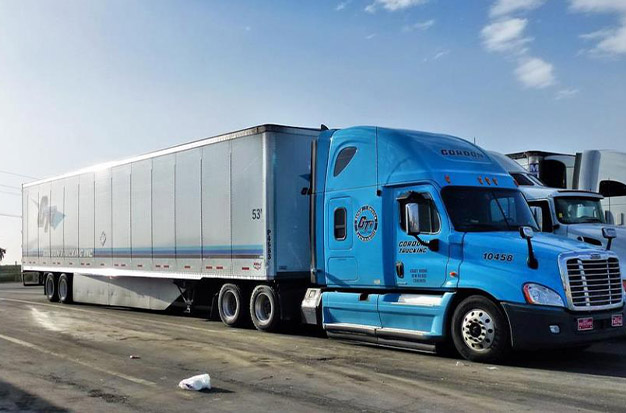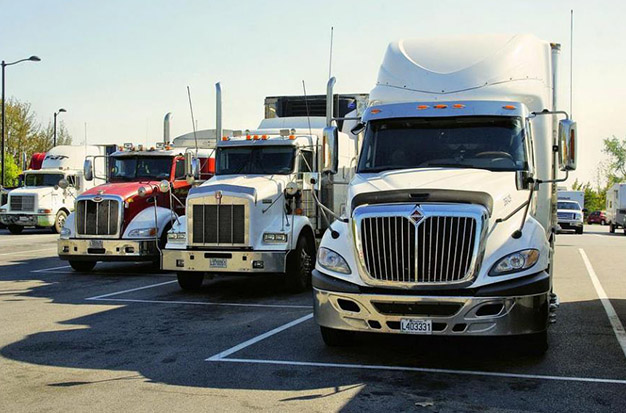You should be aware of your truck’s payload capacity if you plan to haul cargo. The maximum weight your truck can safely carry is known as its payload capacity. The actual cargo is the payload. The towing capacity and the payload capacity are distinct. When you take into account the truck’s weight as well as any cargo it may be carrying, you can determine how much weight your truck can tow safely.
It’s common for people to misunderstand the terms payload and towing capacity. Understanding payload capacity is important because failing to do so could result in damage to your truck, your cargo, or both. Damage that is expensive to repair can result from exceeding your payload capacity. Additionally, it may endanger people’s lives. In this article, we’re going to examine some fundamentals.
What Is A Truck’s Payload?
The cargo a truck hauls is known as its payload, as stated. It is specifically the weight your truck can transport when its fuel tank is full. The payload is everything you can fit into a truck. That goes for equipment, things you are transporting, people, and even your dog.
You must first look at the Gross Vehicle Weight Rating to ascertain the truck’s payload capacity. The maximum safe load weight for the vehicle is indicated by its GVWR. This sum includes both the truck’s loaded cargo (including passengers) and the curb weight, which is the weight of the vehicle when it is empty. The trailer and hitch are included in the GVWR as well. This number is set by the manufacturer, and your owner’s manual most likely contains it.
The curb weight of your truck should be calculated next. The weight of your truck when it is empty is its curb weight. Therefore, no drivers, passengers, dogs, or cargo is allowed. A full tank of fuel, oil, and other fluids is also included in curb weight. You can look in your owner’s manual or the manufacturer’s specifications to find out the curb weight.
You might also weigh your car. Check your owner’s manual first to see how much oil, gas, and other fluids your truck should have before doing that. Have your vehicle towed to an auto shop to be weighed after precisely filling it up. Your current curb weight is known.
Make a quick calculation to determine your payload capacity. the GVWR is reduced by the curb weight. You’ll know your payload capacity as a result. For instance, if the curb weight of your truck is 4500 lbs and the GVWR is 7050 lbs, the load capacity will be 2550 lbs. The amount of weight in cargo your truck can safely carry is determined by its payload capacity.
Truck Payload Vs. Towing Capacity
It’s critical to remember that your truck’s payload and towing capacity are two entirely different things. The amount of weight that your truck can tow behind it safely without endangering your car is referred to as its towing capacity, while the payload capacity determines how much weight your truck can carry.
Another straightforward equation will tell you how much your truck is capable of towing. Finding the gross combined vehicle weight rating (GCVWR) requires first figuring out the curb weight of your truck. The GVWR of the truck plus the GVWR of the trailer make up the GCVWR. Due to the fact that different trailers from different manufacturers may appear to be nearly identical but have different GVWRs, GCVWRs are frequently generalized by truck manufacturers. According to the options you selected when you purchased the vehicle, the 2021 Chevy Silverado 1500, for instance, has a towing capacity of up to 9,700 pounds.
Remember that the towing capacity is also impacted by the payload of the truck. You will put more pressure on your truck and be able to tow less weight safely if you add more weight to the bed of your truck. See more about What Is A Straight Truck?
Why Do We Use Payload Capacity?
The short answer is that payload capacity is an important metric for truck owners because it can mean the difference between getting that load of playground sand or tree bark home safely and unintentionally becoming a member of the Stance Nation—vape pen not included.
Due to the excessive weight required to move your truck down the road, overloading the interior and bed can cause your suspension struts and springs to prematurely fail, buckle frame points, cause bent paneling, and even cause drivetrain failure.
Imagine Timothée Chalamet attempting to carry two Chicago Bears linebackers across the field to better understand the disparity in payload ratings between vehicles like the Ford Ranger and Ford F-150. His heart would explode, his knees would tremble. Then picture Dwayne Johnson trying the same; he would lead those two to the end zone.
How Is Payload Capacity Calculated?
The total weight of all the cargo you can safely add to your truck’s empty weight (also referred to as curb weight) is referred to as the payload capacity of your vehicle. In addition to five passengers and a week’s worth of luggage, a “payload” could also be a truck bed full of garden mulch.
Your vehicle’s manufacturer determines the payload capacity and lists it in the owner’s manual. But you can figure out your truck’s payload capacity on your own by using some math:
The Gross Vehicle Weight Rating (GVWR) of your truck should be your first point of reference. The manufacturer also establishes the GVWR, which is detailed in your owner’s manual. Your truck’s payload capacity is calculated by deducting the curb weight from the GVWR.
Payload Capacity = Gross Vehicle Weight – Curb Weight
For instance, if the empty weight of your truck is 5,000 lbs and the GVWR is 9,000 lbs, your payload capacity is 4,000 lbs. The weight capacity of your truck is 4,000 pounds.
Note that passengers are included in the payload capacity. If you’re picking up a few friends, you might have to drop some cargo to stay within your truck’s weight restrictions.
The following are some typical payloads that your truck may be able to transport:
- One-quarter cord of firewood (1,250 lbs)
- One-half cubic yard of sand (1,300 to 1,500 lbs)
- One-half cubic yard of gravel (1,200 to 1,450 lbs)
- One-half cubic yard of mulch (300 to 400 lbs)
- One-half cubic yard of dirt (1,000 lbs)

How Should You Set Up The Payload On Your Truck?
The payload capacity of your truck also depends on how you arrange the load because uneven weight distribution can result in damaged parts and hazardous situations like Italy’s infamous Leaning Tower of Pisa. While full-on Tetris play is not required, a small amount of anal-retentiveness is beneficial.
Common sense is truly all you need and The Drive’s team is here to offer you our pro tips for arranging your pickup truck’s payload. Our pro tips include:
- Avoid overloading your truck, which is the most obvious piece of advice. Be mindful of the contents you are adding and their weight.
- The lowest point in the pickup truck’s bed should hold the heaviest items you’re transporting.
- Spread your cargo evenly across the truck bed if you are hauling heavier loads.
- Single, hefty items should be strapped (e. a car engine or oak table from Using ratchet straps, position the object (Ron Swanson’s workshop) in the middle of the mattress.
- Never fill your truck’s bed past the height of the bed rail unless it is properly secured with ratchet straps or a tarp for loose items.
- Be aware that as your truck accelerates, decelerates, and turns, water or other liquids in the bed will slosh backward, forward, and side to side. Sharper throttle or brake inputs, as well as quick changes in direction, will amplify these effects and could be dangerous.
- Ensure that all of the containers in the truck’s bed are shut tightly.
- State laws frequently stipulate that anything stored in the bed that is longer than the bed must have a small red or orange flag or towel attached to it so that other drivers are aware of it.
What Trucks Have The Best Payload?
There is a truck that will work for you no matter what maximum payload capacity you require. When deciding which truck to purchase, keep in mind that you need one that will last if you need a work vehicle. Investigate some of the top-notch light-duty pick-ups currently available if you only plan to transport small loads around town. If you intend to launch a hotshot business and anticipate transporting significant payloads, you should research heavy-duty trucks, perhaps with dual-wheel drive.
Excellent vehicles are available from Toyota, Ford, Chevrolet, and Dodge. Prior to signing on the dotted line, be sure to do your research and have a clear understanding of your goals. These trucks vary in their gas efficiency. Some have more comfortable interiors. You must make a decision on everything.
A staggering 7640 lbs are available from the 2019 Ford F-350 Super Duty. max payload capacity. The payload capacity of the 2020 Ford Super Duty is 7850 lbs. These are below the typical gas engines. Ford tops the list of trucks on this list in terms of maximum payload.
A maximum payload of 7442 lbs is available on both the 2020 Chevrolet Sierra 3500HD and Silverado 3500HD. That is true if the vehicle is equipped with a 6.6-liter V8, Regular Cab, and dual-wheel drive. Such a large hauling capacity, for sure.
The maximum payload for the 2020 Dodge Ram 3500 is 7680 pounds. The 3500 is available with a variety of cab arrangements, a 6’4″ or 8′ cargo bed, and either rear-wheel drive or four-wheel drive. A single or two sets of rear wheels can be specified.
What Takes Place If You Go Over Truck Payload?
Do you notice your truck’s handling is sluggish? If so, it may be because your shocks are being put under more stress due to the extra weight. The manufacturer’s calculation of your GVWR is unique to them and is based on particular criteria. Going over that puts unnecessary stress on crucial truck components.
Your payload capacity has a weight limit, and exceeding that limit can put unnecessary pressure on your tires. That might cause a blowout. Even with an empty truck, a blowout is bad. When a blowout occurs while a vehicle is overloaded, it will be difficult for the driver to maintain control, endangering both themselves and a large number of other passengers. Your truck may sustain structural damage.
There is a genuine possibility of serious injury if you are overloaded and traveling down a particularly dangerous stretch of road, or if you simply hit a rough patch, large pothole, or even cross railroad tracks. A transmission that has been put under excessive stress could also be harmed. Working under the payload capacity is the best way to completely eliminate all of these risks.
Conclusion
Various classes of trucks will have varying payload capacities. For instance, the payload capacity of light-duty trucks will be lower than that of a full-sized truck. The ability to haul more weight is typically associated with heavy-duty. The best truck for you will depend on what you need from one, so do your research and go for a few test drives before deciding on one. Do not exceed your GVWR, always drive safely, and pay attention to manufacturer recommendations. It is prudent to keep your intake below the advised amount.
